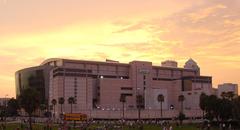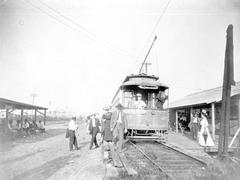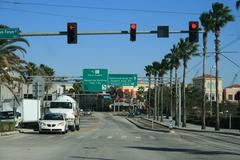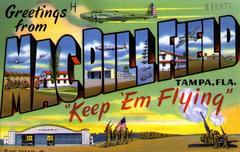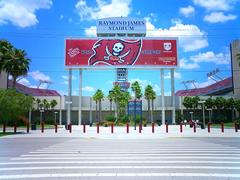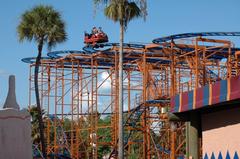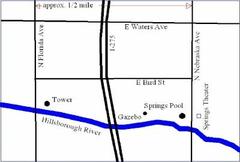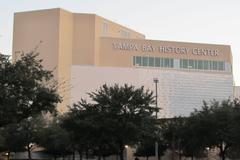David Falk Memorial Theater Tampa: Visiting Hours, Tickets, and Comprehensive Guide
Date: 14/06/2025
Introduction
Located in the heart of downtown Tampa, the David Falk Memorial Theater is a celebrated historical and cultural landmark. Established in 1928 as the Park Theatre and later renamed to honor Tampa businessman and philanthropist David A. Falk, the theater stands as a testament to the city’s rich performing arts heritage. Its Spanish Baroque and Mediterranean Revival architecture, complete with ornate façades and minarets, makes it both an architectural and artistic treasure.
The theater is now a premier venue for the University of Tampa’s music and theater departments, hosting concerts, plays, and community events that enrich Tampa’s cultural landscape. With a seating capacity of approximately 1,000 and modern technical amenities, the theater offers an intimate yet grand experience. Its central location provides easy access to other Tampa attractions, such as the Henry B. Plant Museum, and ensures visitors can craft a memorable cultural itinerary.
This guide provides detailed information on the theater’s history, architecture, visitor experience, ticketing, and practical tips, ensuring you have all you need for a rewarding visit. For performance schedules and ticket purchases, consult the University of Tampa’s official event calendar and explore additional resources on Tampa’s arts and historical venues (source).
Table of Contents
- Historical Overview
- Architectural Features and Design
- Cultural Significance and Community Impact
- Visitor Information
- What to See and Do
- Philanthropic and Cultural Legacy
- Frequently Asked Questions (FAQ)
- Plan Your Visit and Stay Connected
- References and Further Reading
Historical Overview
Origins and Early Years (1928–1962)
The theater opened on December 22, 1928, as the Park Theatre, debuting with “Nothing to Wear” starring Jacqueline Logan and live vaudeville acts. Designed with Spanish Baroque influences, it featured a master Page Twin organ, highlighting its prominence in Tampa’s entertainment scene (Cinema Treasures). Operated by Paramount Pictures via subsidiary E.J. Sparks in the 1940s and later by Wometco Theatres, it maintained a key role in Tampa’s cultural life.
Transition to University Ownership and Renaming (1962)
In 1962, the University of Tampa acquired the theater, renaming it the David Falk Memorial Theater in recognition of David A. Falk’s significant contributions to Tampa’s business and cultural community (Historic Theatres in Tampa).
Restoration and Continued Use (1981–Present)
A comprehensive restoration in the 1980s preserved the theater’s historic Spanish Baroque features while modernizing its facilities. Today, it serves as a 1,000-seat performance venue for the University of Tampa, hosting a variety of concerts, plays, and community events (UT Department of Music).
Architectural Features and Design
Historical Context and Style
Constructed during Tampa’s urban expansion in 1928, the theater’s Mediterranean Revival style features stucco walls, red-tiled roofs, arched windows, and ornamental details, chosen for both elegance and suitability to Florida’s climate.
Exterior and Interior Details
The façade impresses with symmetrical design, decorative cornices, and arched entryways, enhanced by wrought-iron balconies and intricate tilework. Minarets, echoing the nearby Henry B. Plant Hall, connect the theater to Tampa’s architectural heritage (source).
Inside, the grand lobby features high ceilings, ornate plasterwork, and period lighting. The auditorium’s proscenium layout ensures excellent sightlines and acoustics, with decorative moldings, gilded accents, and velvet draperies enhancing the ambiance.
Technological and Accessibility Upgrades
The theater has integrated state-of-the-art lighting and sound systems, as well as accessibility features like wheelchair ramps and assistive listening devices, ensuring comfort and inclusion for all visitors.
Cultural Significance and Community Impact
Role in Tampa’s Arts Scene
The theater is central to Tampa’s performing arts, serving both the University of Tampa and the greater community. It hosts student productions, local theater companies, touring acts, and civic events, making it a vibrant hub for creativity (source).
Preservation and Education
Restoration initiatives, supported by grants and community fundraising, have preserved the theater’s historic and architectural legacy. The theater is listed on the National Register of Historic Places and remains a center for education, hosting classes, workshops, and public performances.
Social and Cultural Engagement
Productions often address contemporary issues, celebrate diversity, and encourage community involvement. The theater is also a venue for social dialogue and cultural exchange, supporting Tampa’s multicultural identity.
Visitor Information
Visiting Hours
Visiting hours are scheduled around performances and university events. For the latest details, check the University of Tampa’s events calendar.
Tickets and Pricing
Tickets can be purchased through the University of Tampa box office online or in person, with prices varying by event. Discounts are typically available for students, seniors, and university affiliates (University of Tampa Box Office).
Accessibility
The theater is fully accessible, offering wheelchair seating, accessible restrooms, and assistive listening devices. Visitors with specific needs should contact the box office in advance.
Getting There and Parking
Located at 428 W. Kennedy Boulevard, the theater is accessible by car, with ample university and public parking nearby. Public transit via HART buses and rideshare services also provide convenient access.
What to See and Do
Must-See Features
- Spanish Baroque and Mediterranean Revival Architecture: Ornate façade, minarets, and elegant interior.
- Historic Page Twin Organ: A rare artifact from 1928, preserved in the theater.
- Live Performances: University productions, concerts, and guest artist events.
Special Events and Tours
Special events and occasional guided tours offer opportunities to explore the theater’s history and architecture. Check the university’s events page for announcements.
Nearby Attractions
The theater is close to the Henry B. Plant Museum, Tampa Theatre, Tampa Riverwalk, and other downtown attractions, making it an ideal stop on a cultural tour.
Philanthropic and Cultural Legacy
The Falk family’s ongoing support exemplifies Tampa’s tradition of civic philanthropy. Their foundation continues to fund educational and cultural initiatives at the university and within the community.
Visitor Experience and Tips
- Arrive Early: Doors open 30 minutes before performances.
- Dress Code: Business casual is recommended for evening performances.
- Photography: Permitted in public areas, but not during performances.
- Refreshments: Available in the lobby during select events.
- Mobile Devices: Silence or turn off before performances.
Frequently Asked Questions (FAQ)
Q: What are the theater’s visiting hours?
A: Visiting hours coincide with scheduled performances and events; check the university’s events calendar for current information.
Q: How can I purchase tickets?
A: Buy tickets online through the University of Tampa’s box office or in person.
Q: Is the theater accessible?
A: Yes, with wheelchair access, assistive devices, and accessible restrooms.
Q: Are guided tours available?
A: Special tours may be arranged by request; contact the box office.
Q: Where can I park?
A: University lots and nearby public parking are available; public transit and rideshares are convenient alternatives.
Q: Are there discounts?
A: Yes, for students, seniors, and university affiliates.
Plan Your Visit and Stay Connected
For up-to-date information on performances, visiting hours, and ticketing, consult the University of Tampa Department of Theatre and Dance or call (813) 253-3333. Download the Audiala app for seamless ticket purchasing and event updates, and follow the theater’s social media channels for news and behind-the-scenes content.
Summary and Final Tips
The David Falk Memorial Theater stands as a beacon of Tampa’s dedication to the arts and historical preservation. Its elegant Mediterranean Revival design and vibrant programming create memorable experiences for visitors. Secure tickets in advance, arrive early, and explore nearby cultural sites for a well-rounded visit. Stay connected for the latest updates and immerse yourself in Tampa’s dynamic arts community (source).
References and Further Reading
- David Falk Memorial Theater in Tampa: Visiting Hours, Tickets, and Historical Significance, 2025, (UT Department of Music)
- David Falk Memorial Theater Tampa: Visiting Hours, Tickets & Historical Insights, 2025, (The Fun Times Guide)
- Falk Theatre Tampa: Visiting Hours, Tickets, and Historical Significance, 2025, (Chamber of Commerce)
- Visitor Information, 2025, (UT Theatre and Dance Event Calendar)
